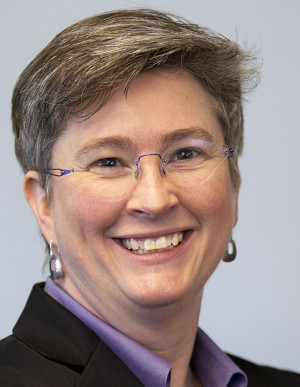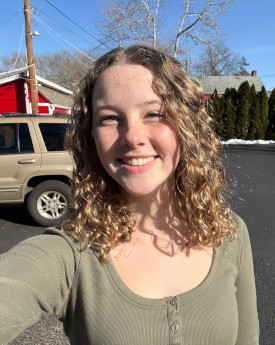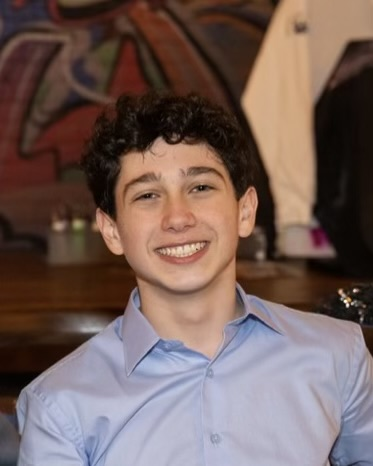What is translational medicine and how does it impact our CARRA community? To answer these questions, we turn to Dr. Joni Rutter, the Director of the National Center for Advancing Translational Sciences (NCATS) at the National Institutes of Health (NIH). Tune in to hear about how she’s focused on breaking down barriers and speeding up the time it takes to get treatments from the lab to patients. We learn about what translational science means for pediatric rheumatology, why it’s so important for rare diseases, and how data science could be used to help find treatments for rare diseases.
Here are some highlights from their conversation.
What is translational science and how does it impact a patient like me?
Translational science is really about turning research discoveries – basic science discoveries in the lab that a lot of the researchers do across the country – into real world health solutions.
Translational science does it in a way that really makes that faster and more efficient. How we do those translations from basic science applied to patients in the clinic? You can think about it as sort of like building a bridge between research and patient care. Scientists often call this the “journey from bench to bedside,” meaning that we start with basic discoveries, like identifying a gene that’s linked to a disease. And, then we move toward treatments like a new drug or a new therapy.
The thing about translational science is that it sounds kind of straightforward, but it’s really not; it’s not simple at all. It’s full of roadblocks, delays, inefficiencies. Science is really hard and not only is science hard, but the way that we do science sometimes requires working with different groups or different companies or different organizations. Sometimes even just figuring out how to build agreements to work together can be long and complicated. So, translational science really works to clear all of those roadblocks, whether they be scientific or operational or administrative. And we want to make the process as smooth and fast as possible.
A key feature of translational science is that it is disease agnostic. So, when we’re talking about rare diseases, for example, there are over 10,000 rare diseases. If we focus on any one particular disease at a time, it’ll take us thousands of years to really be able to find treatments for all of those different rare diseases. So, we don’t focus on just one disease. Translational science is about focusing on all of them. And we do that by tackling common challenges in research and in health care that could affect many different conditions. For example, we develop platform-based technologies, which are tools or methods that can be used across different diseases. Those platform technologies are called platforms because we might build them using one particular disease. When we’re done building those tools. (those platform technologies), they can be applied across many different diseases.
So, things like gene therapy platforms or drug screening tools that can help accelerate progress for a wide range of health issues from rare diseases to common conditions to cancer or heart disease, for example. That’s why those tools are so important. And you know, your last part of your question – “Why does this matter?” – is really the crux of the matter. Why? That’s because time is critical. Patients are waiting for better treatments, and translational science can help deliver solutions more quickly and broadly making an impact across many different rare diseases and, and hopefully improve our health.
What are some ways that you have found to really help people cooperate and work together to get these outcomes in a quicker manner?
Getting people to work together — I think it’s kind of a sweet spot for translational science. We equate the term translational science a lot with team science. A lot of the ways that we try to bring people together to work on problems around, like for example, rare diseases, is that we bring we bring basic scientists, we bring clinicians together, we bring researchers together. And importantly, we also bring the patient and patient advocacy groups together as well.
We get together and we talk about, you know, what are the key things that we really need to solve together? And by connecting the right people, I think that’s where the innovation of what we can do for rare diseases is so impactful. With translational science, bringing together those, those different groups and sharing those ideas, we can make breakthroughs that, that wouldn’t happen or wouldn’t have even worked otherwise, because we have so many different facets of the research questions being covered people with different expertise and different backgrounds.
So, it’s about focusing on what on what works and then learning from different groups of people, especially the patients; the patients know a lot more about the disease than anybody else does. Listening to the patient is probably the most critical thing that we can do, and they can let us know whether or not we’re on the right track or if that’s the right outcome we should really be thinking about. That helps us then really guide the research into directions that will really help improve the clinical outcomes that we’re looking for those patients.
Knowing my audience, how would you say translational science has impacted the CARRA community specifically?
That’s a great question. CARRA is already doing incredible work, bringing together researchers, doctors and families to tackle pediatric rheumatological diseases. I think translational science can help supercharge those efforts by taking what CARRA learns and what it’s been doing and helping to transition that into action. So, for example, when CARRA collects data from patients. As you know, CARRA has a registry, and translational science can help turn that data into possibly new clinical trials. For example, identifying patterns in the data and understanding how certain treatments might be able to work and figuring out how to apply those insights into developing better therapies for all kids, not just the ones in a particular study. So, I think those are ways in which I think translational science could really be advantageous for not just the CARRA community, but all communities.
To the rare disease families listening to this, what is your call to action?
Here’s where the CARRA community comes in is supporting translational science. It isn’t just something that scientists or policymakers do. It’s something that we all need to do together. We all need to be part of the translational science and that, you know, moving the research insights that we find into that clinical practice. So, the call to action I would say is, you know, really advocate when you talk to your community. Encourage your community to talk to your policymakers, your Congress representatives, and share your story. Remind them that funding translational science directly impacts your family’s future. And it’s important for us to make sure that we critically move the scientific findings that are generated into that clinical practice.
I’d say the other thing is that you can participate and join studies or registries like the ones that CARRA leads, as you mentioned. Your contributions and your family’s contributions are just invaluable to that.
The last call to action I would say is, really stay engaged, learn more about how science happens, why science matters, why translational science matters to bring the basic science findings into the clinical setting. Because knowledge is power and when you’re advocating for your specific disease or your specific family member there’s nothing more important than ensuring that what you’re doing is going to help contribute to ultimately getting those treatments to the people who need them. So, at the end of the day, I’d say it’s, you know, translational science isn’t just about the research. It’s really about the hope. When you advocate, when you participate, when you’re engaged, that’s what brings that hope alive. And it’s about turning the challenges that you’re facing today into the solutions that will make tomorrow better, not just for your family, but for all families who are dealing with pediatric arthritis and rheumatological diseases.
As you said earlier, you’re helping to direct research in more than 10,000 rare diseases. What are you most excited about?
I think one of the big picture things though is, you know, with 10,000 rare diseases, I think one of the biggest areas is data science and artificial intelligence and being able to use data in ways that we’ve never been able to use before. One of the things that I think highlights the power of data science is that we’re able to look at data from a variety of different rare diseases, for example, through looking at data from very different databases.
We’re able to use artificial intelligence and machine learning with humans in the loop, of course, doing that, to look at patterns within the data to see if there might be potential therapeutics that are already known, already being used. Maybe they weren’t used for the particular rare disease that we’re looking at. But for some reason we think they might because we found a new pattern in the data using artificial intelligence and AI and machine learning to identify it.
So, I think one of the most exciting areas is how we can leverage the deep knowledge that we can see through pattern recognition in the large data cohorts that we have or large data sets that we have to help us identify insights that we never would have known before or been able to really detect before without sort of that really deep pattern recognition through AI and machine learning. That’s one area that I’m pretty excited about.
This episode was produced and edited by Mason Lippman.
Learn how patients/family members can join CARRA and become a member today!
About Joni L. Rutter, Ph.D.

Joni L. Rutter, Ph.D., is the director of the National Center for Advancing Translational Sciences (NCATS) at the National Institutes of Health (NIH). She oversees the planning and execution of the center’s complex, multifaceted programs that aim to overcome scientific and operational barriers slowing the development and delivery of new treatments and other health solutions.
Under Rutter’s direction, NCATS supports new tools and approaches to make each step in the translational process more effective and efficient. A key goal is to speed research across a range of diseases, with a particular focus on rare diseases. By advancing the science of translation, NCATS helps turn promising research discoveries into real-world applications that improve people’s health.
During her career, Rutter has earned a national and international reputation for her diverse and unique expertise via her journal publications. She has received several scientific achievement awards, including the 2022 Rare Disease Legislative Advocates–RareVoice Award for Federal Advocacy and the 2022 FedHealthIT–Women in Leadership Impact Award.
Rutter received her Ph.D. from the Department of Pharmacology and Toxicology, Dartmouth Medical School, Hanover, New Hampshire, and completed a fellowship at the National Cancer Institute within the Division of Cancer Epidemiology and Genetics.
About Claudette Johnson

Claudette is a Junior at Montclair High School in Montclair, New Jersey. She was diagnosed with Localized Scleroderma at age nine. She enjoys playing piano, reading and competitive diving. Claudette is also an incredible advocate and innovator. She is the host of The CARRA podcast, and she created an award-winning video called “The Land of Rare Disease.”
About Mason Lippman

Mason is a Sophomore at Montclair High School in Montclair, New Jersey. He was diagnosed with more than a dozen anaphylactic food allergies at a very early age. He is currently enrolled in The Food Allergy Institute’s Tolerance Induction Program, based in Southern California, in which he is involved in pediatric research. Mason is a member of the Montclair Film community in addition to playing tennis and guitar.
We want to hear from you! Send us a message to let us know your thoughts, suggestions, or any ideas for future topics.